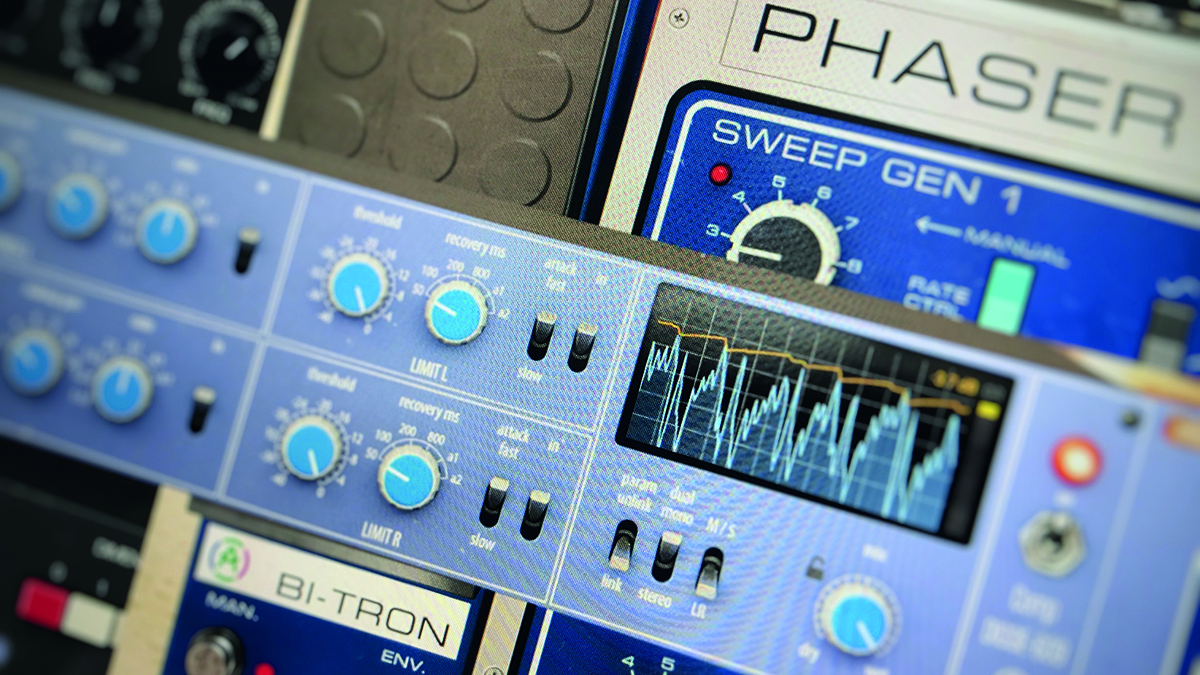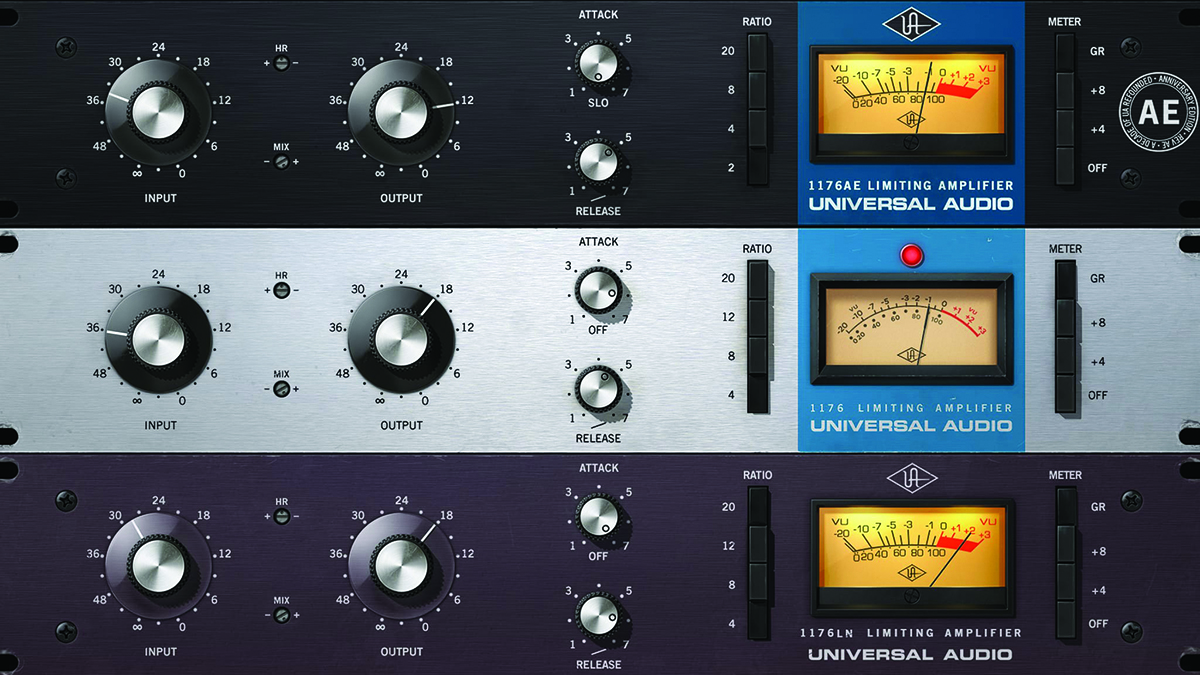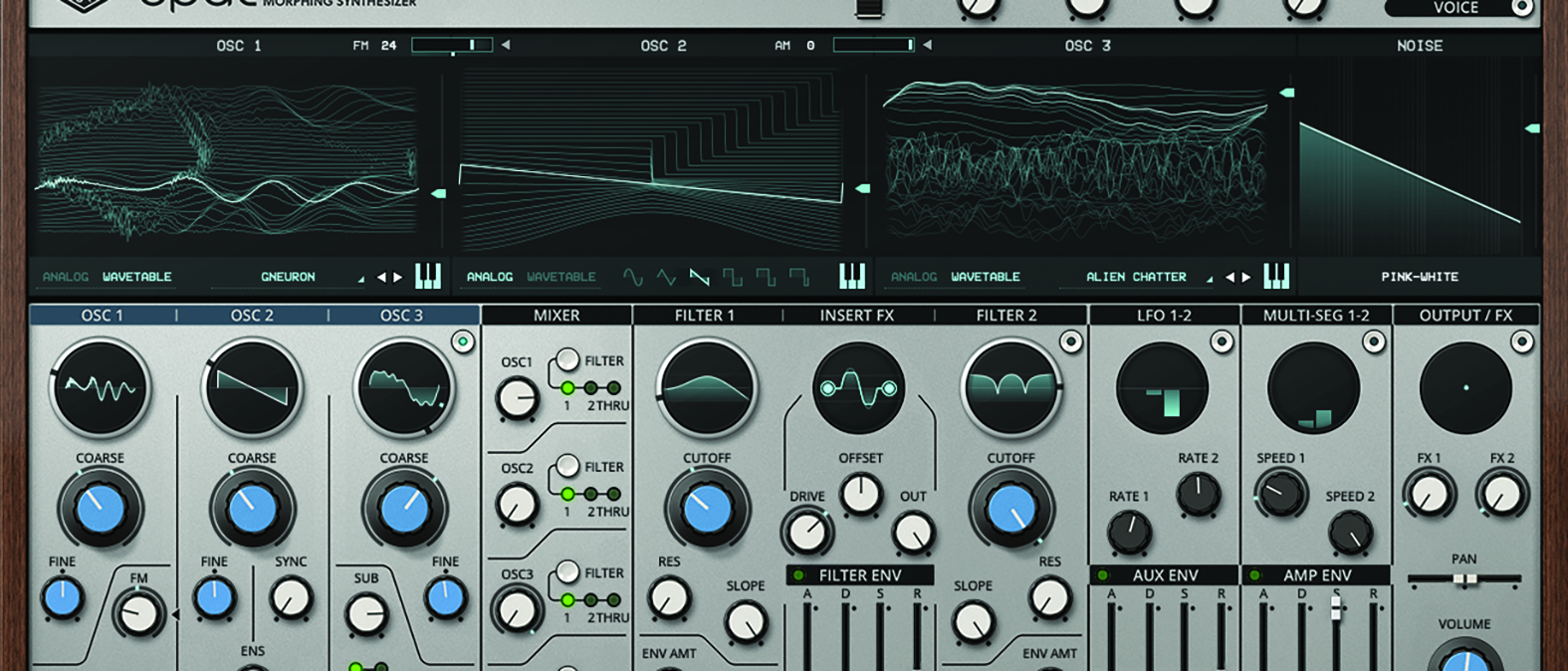MusicRadar Verdict
Spark could easily be the most valuable subscription in your production arsenal, offering superb effects and stunning instruments, all in one suite.
Pros
- +
Some of the finest plugins available.
- +
Beautifully flexible in their Native format.
- +
The classic effects are just that! Classic!
- +
Exceptional instrumental plugins.
Cons
- -
The first Spark batch is limited.
- -
Some will resent the subscription model.
MusicRadar's got your back
Universal Audio Spark: What is it?
Speak to any audio professional working within the realms of audio production or music composition, and the chances are they will have used Universal Audio plugins at some point.
With an enormous catalogue, encompassing vintage and contemporary classics alike, it’s possible to emulate the sound of circuitry from the likes of Neve, SSL and Moog, with utterly alarming accuracy and detail, and all from within the software domain.
The ethos related to the company's extensive plugin platform has always been to rely on its appropriately equipped hardware for plugin processing, thus relieving your computer’s CPU of the heavy lifting.
Once upon a time, this was a sound option, but with the advent of faster computing, the necessity for an external device to take up the slack has seemingly become outmoded. This has undoubtedly influenced UA’s decision to re-engineer many of its plugins to a native format, allowing access to all users, regardless of what their choice of audio interface might be.

The native response is Spark; a subscription-based model, which kicks off with a free 14-day trial, after which time it will cost a mere $20 a month. Given the breadth of UA plugins currently available, it would be almost inconceivable for all of its plugins to migrate to a native format in one go, hence the opening offering feels somewhat limited, if compared to the entire catalogue.
UA has, however, made efforts to begin with some of the diehard perennials. For starters, the 1176 and LA-2A compressor collections are both available, along with its Pure Plate and Lexicon 224 Digital Reverbs, and the Galaxy Tape echo, which is a model of the Roland Space Echo. There’s a 1073 preamp and EQ from Neve, and API Vision Channel Strip, with tape saturation in the style of the Studer A800.
This feels like a very solid backbone to a library which, by UA’s own admission, will be expanding
This feels like a very solid backbone to a library which, by UA’s own admission, will be expanding over the coming months. This can’t come soon enough for PC users, who at the present time are excluded from Spark; UA say that PC compatibility will follow in the Autumn.
The big news for anyone who is already within the UA ecosphere, is that if you have already purchased these plugins in the previous UAD format, you will immediately be offered the native versions through their new portal, whether you subscribe to Spark or not.
Universal Audio Spark: Performance and verdict
Undeniably, the vast majority of the catalogue is made up of audio effects, and exceptional effects they are too. UA prides itself on the accuracy and lengths that it goes to to ensure intrinsic detail, right down to the component level. Little wonder then, that its plugins are so highly revered.

• Arturia FX Collection 2
Arturia has also had success in modelling, with the latest FX Collection gaining many users.
• Waldorf PPG Wave 3.V
The original Wavetable synth, in software form, from the people who made it.
Where UA is making something of a departure is with greater visibility of plugin instruments, of which there are four included within the Spark subscription.
Its piano plugin, which it has called Ravel, is based upon the studio favourite, Steinway Model B Concert Grand. Recorded at Ocean Way, it remains one of the finest examples of piano plugins available.
This has previously only been open to use within UA's own Luna DAW suite, much like its Minimoog plugin. The ability to now own its Minimoog in a native format allows us to compare and contrast the plugin against some of the other industry examples, including the hardware version from Moog.
To say that it stands up well is a huge understatement, as its breadth and weight of sound is classic Moog, but with the convenience of software. It’s also fair to say that it gives its competitors a fair kicking, in both sound and value.
Newbies
Alongside the old guard, UA is including a Waterfall B3 Hammond organ; true to form, the mic configuration, along with the rotary speaker cabinet, is utterly sublime. It literally feels as though you’re in the room with the instrument, as it casts a rather large shadow over the competition, much like the Minimoog plugin.
However the new instrument that has raised the largest number of eyebrows would be the Opal Morphing Synthesizer.
Equipped with three oscillators per voice, each oscillator may be used in a conventional subtractive-style waveform mode, or switched to wavetable mode, where the included library of digital wavetables may be utilised.
Thanks to an extensive modulation matrix, it’s exceptionally easy to modulate these wavetables, or just about any other parameter that you would choose to exploit.
Opal is equipped with two simultaneous filters, which are permanently in a variable state. This also opens up huge sonic potential, for modulating the filter state in a continuous manner.
It’s testimony to Opal that we were immediately sucked into editing, thanks to its beautifully clear display, and easy access to the required elements. While Opal is heavily tinged with the contemporary, it undeniably sounds UA, thanks to the endorsement of the company's back-end effects.
The consequence is that it sounds very modern, but with an overt sense of the fatness associated with vintage equipment.
Post-production conundrum!

For any composer, musician or producer already ensconced in the UA hierarchy, there may be little need for persuasion when it comes to describing the qualities of the brand's plugins. Even the most basic of compressors, such as the 1176 and LA-2A plugins, have become indispensable within many productions.
The problem is, they sound so good that many of us feel that nobody else has quite hit the mark so far! But here is the UA conundrum; by UA’s own admission, its non-native UAD plugins have always been considered plugins for post-production work.
That’s all very well, but the reality is that with the current way that most of us work, we write music and plug in effects as we go. The danger with UA’s non-native plugins is that the more you use, the greater the degree of latency that gets added to your system. It’s a problem, and a huge bugbear for many producers and composers.
Consequently, the announcement of a move to native formats will alleviate the latency issue in one fell swoop! If you’ve purchased UA plugins before, you’ll be treated to the native formats as they become available, so the only immediate issue is how quickly the plugins you already possess become available in a native format.
Do you UA?
If you are fortunate enough to have dipped your toe in the world of UA prior to Spark, you will undoubtedly understand why this feels like an important and possibly overdue announcement.
UA plugins form the backbone of many productions, for an alarmingly large number of artists and producers. The emergence of these plugins in a native form will have many shouting from the rooftops, and for good reason.
If these audio effect plugins aren’t a good enough reason for you to jump on Spark, then the instrument plugins surely will be. There is nothing in this initial UA salvo that isn’t up to the highest grade, and that’s a pretty rare thing in a subscription-based package!
MusicRadar verdict: Spark could easily be the most valuable subscription in your production arsenal, offering superb effects and stunning instruments, all in one suite.
Universal Audio Spark: Hands-on demos
Universal Audio
Sanjay C
Barry Johns Studio Talk
Production Expert
Universal Audio Spark: Specifications
- UAD Spark plugins run on your Mac. No UA hardware required. (Windows coming Fall 2022).
- CONTACT: Universal Audio
Computer Music magazine is the world’s best selling publication dedicated solely to making great music with your Mac or PC computer. Each issue it brings its lucky readers the best in cutting-edge tutorials, need-to-know, expert software reviews and even all the tools you actually need to make great music today, courtesy of our legendary CM Plugin Suite.
With its latest free update, Ableton has finally turned Note into the app I always wanted it to be
Technically capable, but struggle to make your tunes sound musical? 5 simple music theory hacks to make your tracks stand out
"Despite its size, it delivers impressive audio quality and premium functions as well as featuring a good selection of inspired sounds": Roland GO:Piano 88PX review











